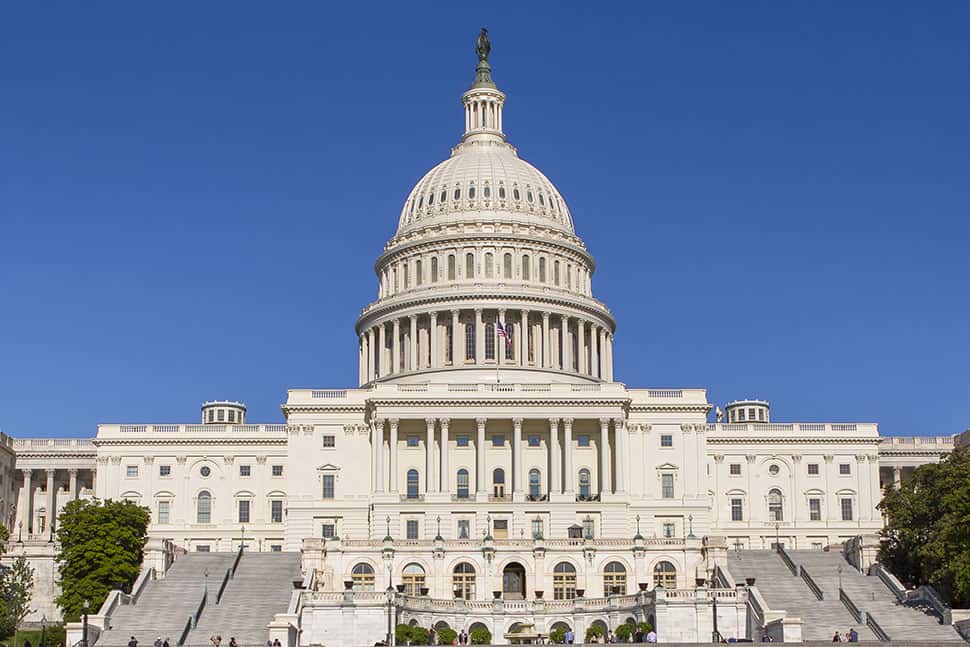Elements of a New American Culture (College Board AP® US History): Study Guide
Summary
Romanticism inspired a shift in American culture that influenced architecture, literature, art, and philosophy in the early and mid-1800s. The growth and change in the country through Western expansion and the increase in immigration would be reflected in changes to the nation’s culture. These changes would manifest the ideas of democracy and self-determination.
American Architecture
There was a transition away from the Georgian style which was influenced by British traditions to that influenced by the Greeks and Romans known as Neoclassical
Neoclassical architecture is symbolic with grand scale, columns, symmetry and simplicity of form.

Source:
https://upload.wikimedia.org/wikipedia/commons/thumb/2/27/Capitol_Building_Full_View.jpg/1920px-Capitol_Building_Full_View.jpg (opens in a new tab)
Romanticism & Changes in American literature
Romanticism's influence in American literature is seen by:
a return to the past
celebrating the individual
expressing the awe of nature
full of emotion and passion that includes horror and the supernatural
Sir Walter Scott
Scott was a Scottish novelist from the early 1800s
He was credited as the inventor of the historical novel
Scott’s most popular novel was “Ivanhoe”, set in 12th-century England
James Fenimore Cooper
Cooper was the first major American novelist
He set novels during the French and Indian War
In his novels, Cooper portrayed the wilderness as a romantic and pleasing setting
Cooper wrote “Last of the Mohicans”
Washington Irving
Irving wrote the short stories, “Rip Van Winkle” and “The Legend of Sleepy Hollow”
These are known as the first American short stories
They are American versions of German folktales
Irving used fantasy, whimsy, and satire in his writing
Edgar Allen Poe
Poe helped create the subgenre of American literature known as Dark Romanticism
His stories included Gothic elements that included frightening or magical subjects
Poe used horror and terror in his work as well
His Most famous piece was “The Raven,” he also wrote “The Cask of Amontillado” and “The Tell-Tale Heart”
Romanticism & Changes in American art
Artists of the Hudson River School created paintings that showed an appreciation for American landscapes and their natural scenery
The paintings hinted at White settlers encroaching on untouched lands
The use of emotion and sentiment often obscured accuracy
The focus of the paintings was on the splendor and drama of the scenery

Source:
https://upload.wikimedia.org/wikipedia/commons/thumb/d/d7/Autumn--On_the_Hudson_River-1860-Jasper_Francis_Cropsey.jpg/640px-Autumn--On_the_Hudson_River-1860-Jasper_Francis_Cropsey.jpg (opens in a new tab)

Source: https://upload.wikimedia.org/wikipedia/commons/thumb/3/30/The_Last_of_the_Buffalo.jpg/220px-The_Last_of_the_Buffalo.jpg (opens in a new tab)
Romanticism & Changes in American philosophy
Trancendentalism
Transcendentalism was a movement that believed in the basic goodness of humanity and rejected established religious thought
The movement supported causes like women’s suffrage, better conditions for workers, and innovation in education
The transcendental movement believed in:
the individual instead of the group
emotion instead of reason
nature instead of humans
Ralph Waldo Emerson
Emerson was considered the spokesperson for the Transcendentalist movement
He wrote essays about individualism and self-reliance and volumes of poetry
Henry David Thoreau
Thoreau believed that man should live simply
He studied nature to seek great truths about the world, life and the universe
In 1854, Thoreau wrote “Walden”, a series of 18 essays about simple living and his views on work and leisure
Margaret Fuller
Fuller was an American feminist who wrote “Woman in the Nineteenth Century” (1845)
This advocated for political equality and intellectual fulfillment for women
She held discussion groups with women about literature, education, mythology, and philosophy
Fuller’s work was influenced by German transcendentalists and wrote an unfinished biography about one of them
She wanted a life that was unrestricted by the gender differences in society at that time
Utopian communities
Shakers
The Shakers were Christian communities in Kentucky, Ohio, and the Northeast where everyone shared common property
They did not believe in sexual relationships
Shakers adopted children and recruited people to join their communities
The Shakers believed in simple clothing, speech, and behavior
The men and women mostly lived and worked apart
Over time the communities died out due to the lack of children
Oneida Community
The Oneida community was a group in New York led by John Humphrey Noyes
The community had a complex marriage system:
Every woman was the wife of every man, and every man was the husband of every woman
The community believed these extended families could dissolve selfishness and bring about perfectionism on Earth
They made and sold:
steel animal traps
Silverware
embroidered silks
canned fruit
The community shared profits, land, and the responsibility of raising children
Examiner Tips and Tricks
While studying for the exam, recall that this new era of Romanticism influenced all aspects of American culture. Be able to discuss how changes in such areas as literature, architecture, communal living and other aspects of culture were all shaped by the broader ideas of individualism, emotion, and nature.

Unlock more, it's free!
Did this page help you?